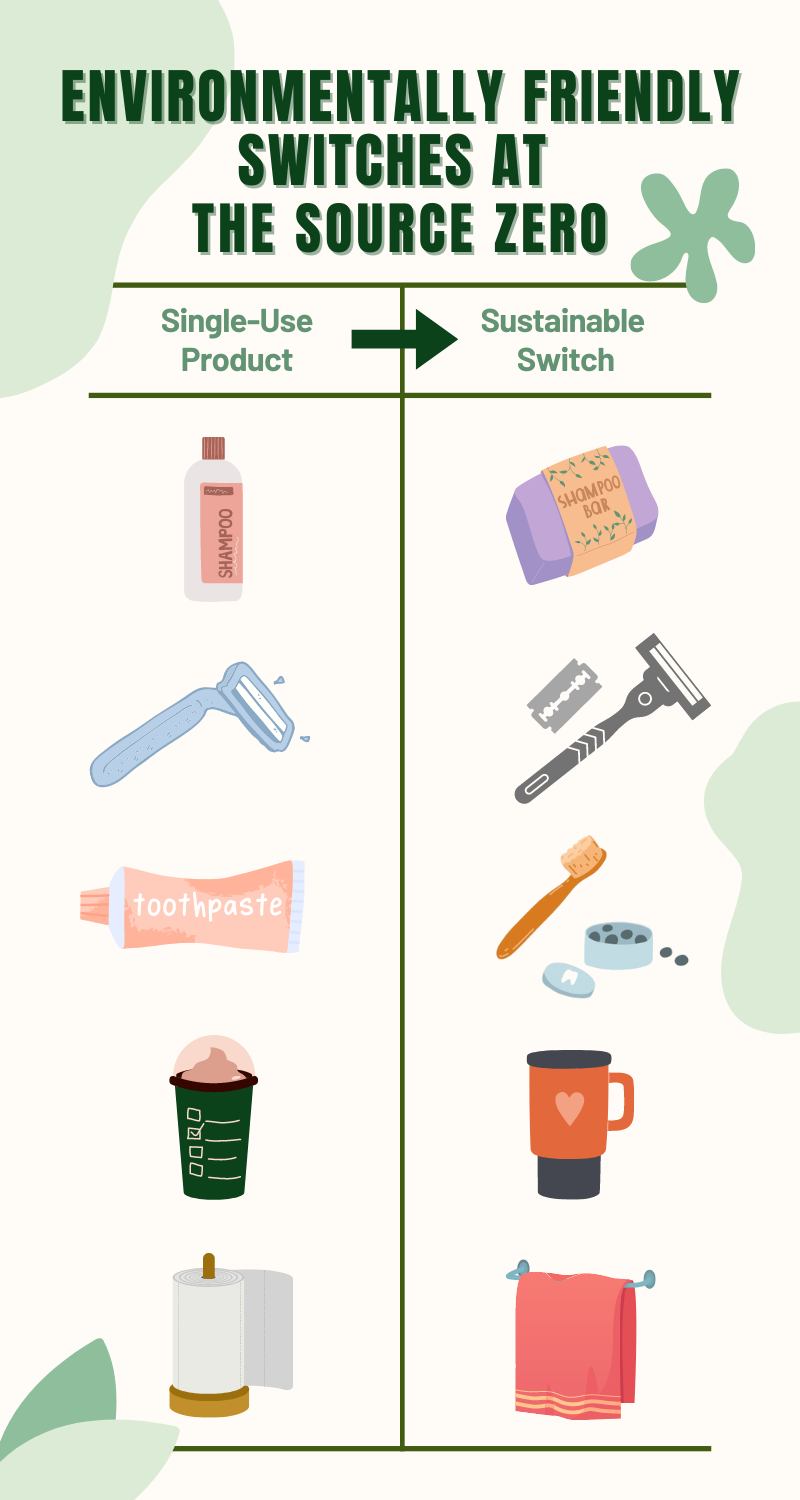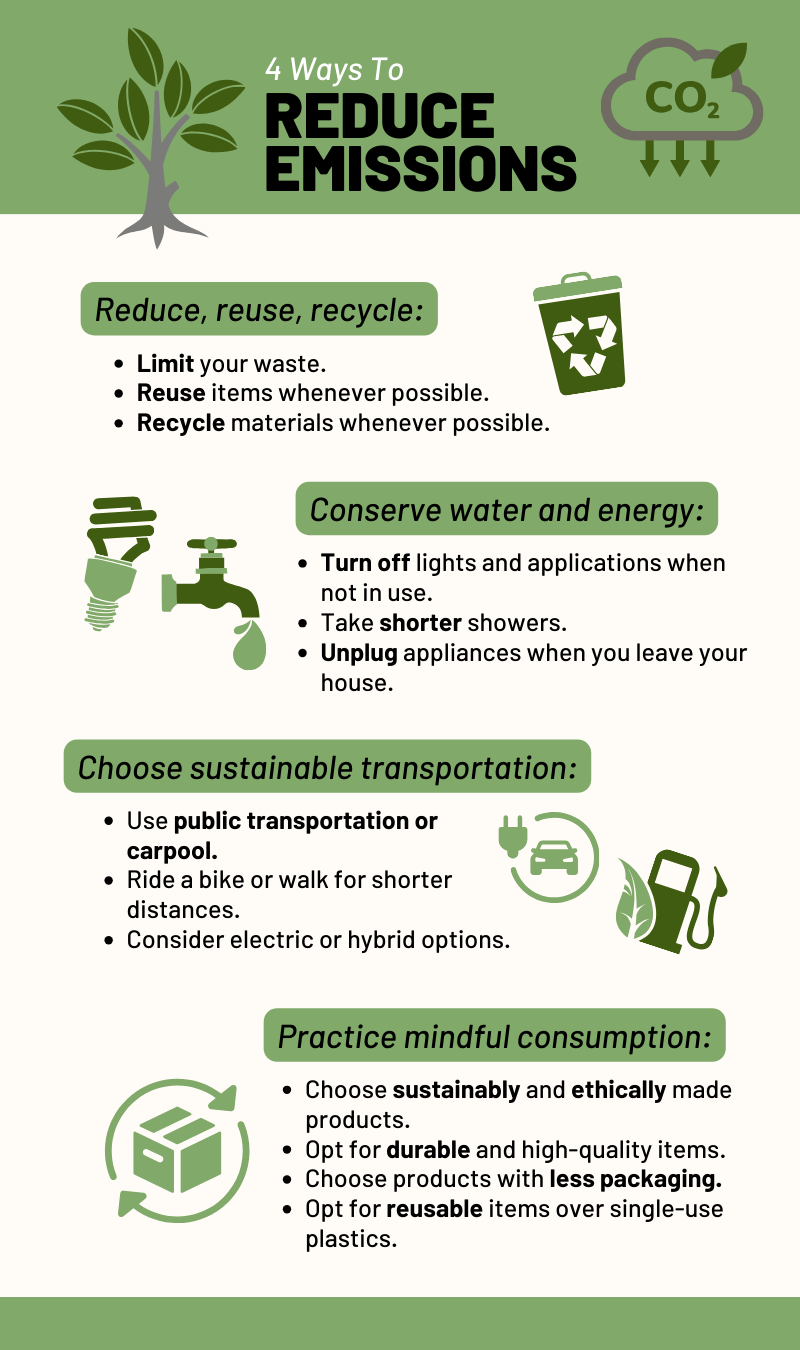It’s a Sunday at 2 p.m.– Jenny clicks the buy button on her computer to get the new skirt from Amazon that she’s had her eye on. After Jenny clicks buy, the fulfillment center employees get to work.
They pick up her order and pack it up in a box, ready to send out. The line haul employees then bring Jenny’s package and other packages to an Amazon Air site, where they fly it to a sorting center. The sorting center then organizes each package by zip code and sends them to the delivery trucks, who then deliver Jenny’s package right to her doorstep.
To deliver Jenny’s package, 10.27 kg of CO2 is emitted into the atmosphere.

Companies are kind of under the impression that when they’re purchasing carbon offsets, they’re protecting green spaces or protecting trees in the Amazon and whatnot. And a lot of the time that’s just not true.
— Sameer Ameen
With 1.6 million Amazon packages being sent a day, an equivalent of 20 packages per second, the environment definitely takes a hit.
But what if Amazon’s emissions could be “offset?”
The Stanford Social Innovation Review “Offsetting Green Guilt” defines carbon offsetting as the ability to allow consumers or companies to reduce their carbon footprint by investing in renewable energy, energy efficiency, forest protection, and other projects elsewhere.
In theory, carbon offsets should be the perfect solution for anyone who wants to reduce their carbon footprint without altering their lifestyle. However, in practice, they might not be as perfect as they seem.
“Companies are kind of under the impression that when they’re purchasing carbon offsets, they’re protecting green spaces or protecting trees in the Amazon and whatnot. And a lot of the times, that’s just not true,” said Sameer Ameen, a student at UC Berkeley studying Environmental Sciences. “That being said, theoretically, carbon offsets should work, but it doesn’t always go one-to-one.”
With big companies, the offsets that they’re investing in aren’t actually offsetting their entire emissions and often are overestimated — Nikhil Nunna
According to Ameen, carbon offsetting is used more with companies rather than for individuals because of the sheer amount of money large businesses have.
“It’s a lot easier when you’re a large-scale company to put money towards those initiatives and be more sustainable. However, there are barriers in larger companies. It’s a lot harder when you kind of produce a certain way to change your entire production line,” Ameen said.
According to a study assessed by the News Climate Institute, 25 of the world’s largest companies only commit to reducing their emissions by 40% on average, not 100% as suggested by their “net zero” and “carbon neutral” claims.
“With big companies, the offsets that they’re investing in aren’t actually offsetting their entire emissions and often are overestimated,” said Carlmont Green Team leadership officer Nikhil Nunna.
Amazon
Whether due to public pressure or genuine care for the planet and climate change, large companies have committed to reducing their carbon emissions.
Take Amazon, a well-known online retailer that has become a monopoly on the online retail market.
According to the 2022 Amazon Sustainability Report 2019, Amazon committed to producing net zero carbon emissions by 2040.
Amazon recently purchased 250,000 metric tons of carbon credits from 1PointFive, one of the largest Direct Air Capture companies. This is so Amazon can “offset” the emissions they say they cannot avoid.
However, 1PointFive is also a joint venture subsidiary under Occidental Petroleum Corp., a Houston-based oil and gas company.
Carbon capture, and Direct Air Capture (which 1PointFive specializes in) is another supposed miracle solution to the issue, as it captures carbon emissions in the air and stores them before they are released into the atmosphere.
A study from the Energy and Environmental Science Journal states that the process of carbon capture is only able to reduce around 10 to 11% of emissions.
According to Nunna, another problem faced with modern carbon capture is unreliability and high costs.
“Carbon Capture is really expensive and inefficient for the amount of CO2 that it can capture. Our atmosphere is 0.0405% CO2, so it’s really hard to capture a substantial amount. If it’s used near plants where more than 90% of their emissions are CO2, then it can be very useful,” Nunna said.
The Source Zero
The Source Zero is a small business in Downtown San Jose that aims to reduce unnecessary waste in everyday household items as well as find organic and natural ingredients that are non-toxic and healthy.
“The idea behind The Source Zero is to offer the alternative to what is our normal, which is being extremely wasteful, buying, consuming things over and over and simply throwing them away,” said Ruth Herrera, manager of The Source Zero.
The small shop was created by owner Ashley Merz, who works with local businesses to source quality products that are sustainable and align with eco-friendly practices.

“70% of our products come from local vendors and small businesses,” Herrera said. “We are in constant communication with the companies to ensure that they continue to uphold those quality values, and if they don’t, we remove the product from the shop.”
According to Herrera, The Source Zero pinpoints the packaging problem in our community by eliminating any additional and unnecessary packaging.
“The product itself doesn’t really come with any packaging. And if it does, it’s either compostable or recyclable,” Herrera said. “We reuse the packaging paper that we get from our products for our deliveries and we store it and we reuse it to wrap either the glass items, the ceramics, or our soaps that we sell.”
This allows the business to significantly reduce its carbon footprint when compared to a general store with similar products such as CVS.
Additionally, The Source Zero offers a variety of reusable products, including best-seller shampoo bars as an alternative to bottled shampoos.
“A lot of people love the eco-friendly aspect of a shampoo bar, but they also really love the convenience,” Herrera said. “You don’t have to carry a bottle of liquid since it’s a bar. You can just use it and at the end of its life, it dissolves so there’s no waste.”
According to Herrera, one of the biggest perks of the shop is its Refill Bar, with products including hair care, raw ingredients, and household cleaners.
“We encourage customers to walk in with their own bottles. So a lot of people actually walk in with their old shampoo bottle and we just refill it. We also sell bottles here and we also have a communal basket where people come and donate empty bottles and jars,” Herrera said.
Herrera urges all customers to try products they haven’t tried before, as they can choose the amount of product they purchase, weighing by ounce.
According to Herrera, she and Merz are incredibly passionate about the store and want to keep spreading their message of sustainability.
“When people learn about the shop, they’re like, ‘I didn’t know this was a good alternative. And I didn’t know this was available. I didn’t even know this existed.’ So we’re allowing our community members to become aware of other alternatives and also to learn about both,” Herrera said.
Reducing Carbon Footprints
It is easy to feel like there is nothing we can do to reduce our carbon footprint, especially with companies’ false claims that they are going to reduce the mammoth amounts of CO2 they emit.
However, there are certain decisions that if given the chance to change, should be taken into consideration every time.
According to Ameen, it can be as easy as turning off the lights whenever you leave a room or bringing a reusable cup to work rather than using a single-use one.
“No one thing is going to work for everyone. But if you were to go ahead and assess your daily actions and what you do on a day to day through a carbon footprint calculator, you can individually personalize,” Ameen said. 
An estimation of your carbon footprint can be calculated by the amount of your yearly expenses on travel, food, home, goods, and services.
Both Nunna and Ameen referenced the California State legislature which in recent years has created signed laws such as the “Renewable Energy Procurement” which positively gives back to consumers in California.
These policies make it easier for people to purchase “green” solutions to things they do on a daily, such as a switch from driving a gas car to an electric car.
“The reason why you see so many Teslas on the road is that California provides incentives, such as a tax rebate, or a tax incentive,” Ameen said. “It’s also the standards that we have because, by 2035, the cost to drive an ice vehicle or combustion engine vehicle will significantly skyrocket because there will be no more production of them in California.”
According to Ameen, California continues to pass bills that allow for easier access to new systems, unlike in other states where passing these policies is much harder for a number of different reasons.
“We (California) lead the country in terms of our emission standards by 2035,” Ameen said. “It’s really just a statewide effort where you’re seeing this push through legislation, through incentives, and also through standards that are bringing us down in terms of our emissions and bringing the rest of the United States along with us.”
According to Carnegie Endowment for International Peace, California has a long history of environmental activism and the government has taken the initiative to prioritize a clean energy transition and set ambitious emissions reduction goals.
According to Nunna, the average citizen might not be the one to blame for the excessive amounts of carbon dioxide emissions.
“I think that there is more pressure on a lot of these companies like Amazon, who have really large carbon footprints. They are the ones who need to be addressing this issue because it ultimately falls upon them,” Nunna said.





